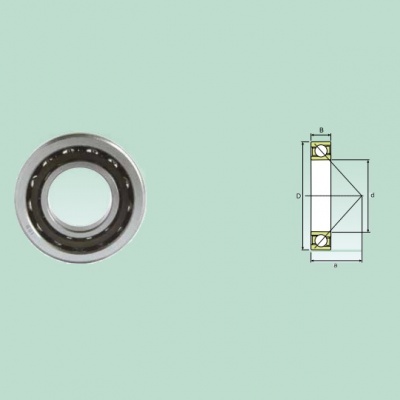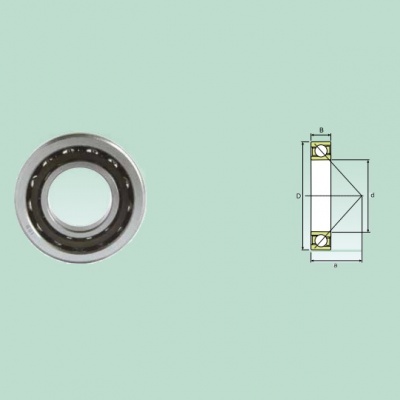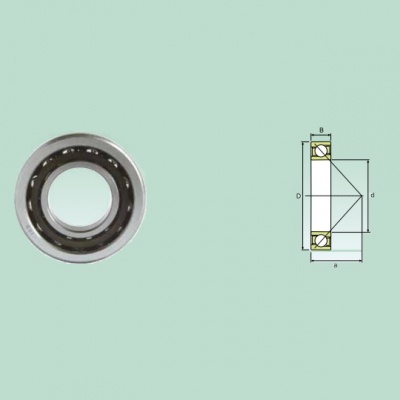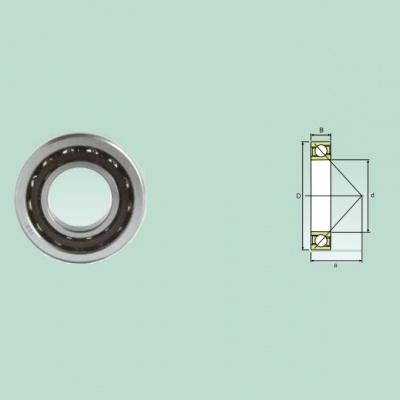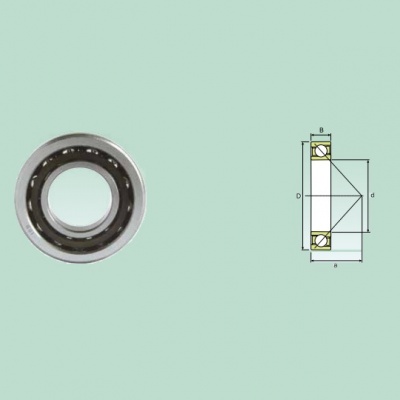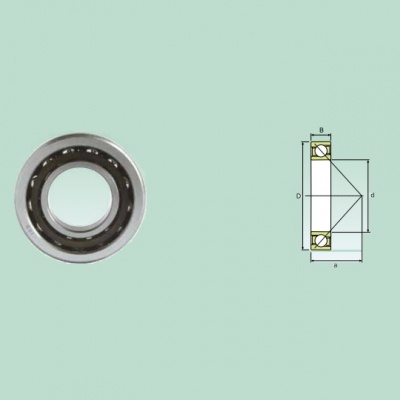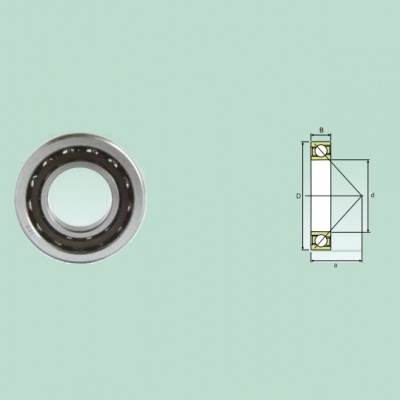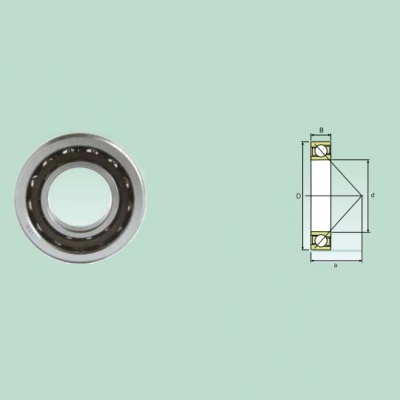They are normally fitted against a second bearing, because they can withstand axial loads that act just in one direction. These types of bearings can withstand a very high axial load because their contact angle is equal to 40°.
The range of ISB® single row angular contact ball bearings includes series 72B and 73B.
They are produced in two versions for just as many different applications:
• Basic design bearings: used just for arrangements with single bearings.
• Bearings for Universal matching: they can be fitted according to the arrangements
Please contact our engineering department for information on these applications. Other special features of ISB® single row angular contact ball bearings are:
• They are one single self-contained piece.
• The rings have a top shoulder and a bottom shoulder.
This last feature means that they can incorporate a large number of balls to guarantee the high load carrying capacity of the bearing
Basic design bearings They are designed for arrangements where only one bearing is used and not one next to the other. Their assembly class of precision is Normal, in terms of the width and standout of the rings. Bearings for Universal matching ISB® single row angular contact ball bearings can be fitted in pairs.
There are three types of possible matches:
• Tandem arrangement. Used when the load carrying capacity of a single bearing is inadequate. The load lines are parallel and the radial and axial loads are equally distributed between the two bearings. A third bearing is usually fitted against the tandem arrangement that takes the axial load directed in the opposite direction because the pair only withstands axial loads directed in just one direction. Please contact our engineering department before placing any orders.
• Back-to-back arrangement. This type of assembly is used when axial loads need to be borne in both directions. The load lines diverge towards the axis of the bearings. The axial load is borne in both directions but only by one bearing at a time, and the application is stiff. The back-to back type arrangement can also react to tilting motions. Please contact our engineering department before placing any orders.
• Face-to-face arrangement. Used when axial loads need to be borne in both directions. The contact lines converge towards the bearing axis. In this case again, the axial load is borne in both directions, always and only by one bearing at a time. This type of arrangement is not as stiff as the back-to-back arrangement but is less suitable for tilting motions. Please contact our engineering department before placing any orders.
The range of ISB® single row angular contact ball bearings includes series 72B and 73B.
They are produced in two versions for just as many different applications:
• Basic design bearings: used just for arrangements with single bearings.
• Bearings for Universal matching: they can be fitted according to the arrangements
Please contact our engineering department for information on these applications. Other special features of ISB® single row angular contact ball bearings are:
• They are one single self-contained piece.
• The rings have a top shoulder and a bottom shoulder.
This last feature means that they can incorporate a large number of balls to guarantee the high load carrying capacity of the bearing
Basic design bearings They are designed for arrangements where only one bearing is used and not one next to the other. Their assembly class of precision is Normal, in terms of the width and standout of the rings. Bearings for Universal matching ISB® single row angular contact ball bearings can be fitted in pairs.
There are three types of possible matches:
• Tandem arrangement. Used when the load carrying capacity of a single bearing is inadequate. The load lines are parallel and the radial and axial loads are equally distributed between the two bearings. A third bearing is usually fitted against the tandem arrangement that takes the axial load directed in the opposite direction because the pair only withstands axial loads directed in just one direction. Please contact our engineering department before placing any orders.
• Back-to-back arrangement. This type of assembly is used when axial loads need to be borne in both directions. The load lines diverge towards the axis of the bearings. The axial load is borne in both directions but only by one bearing at a time, and the application is stiff. The back-to back type arrangement can also react to tilting motions. Please contact our engineering department before placing any orders.
• Face-to-face arrangement. Used when axial loads need to be borne in both directions. The contact lines converge towards the bearing axis. In this case again, the axial load is borne in both directions, always and only by one bearing at a time. This type of arrangement is not as stiff as the back-to-back arrangement but is less suitable for tilting motions. Please contact our engineering department before placing any orders.
Ready for your questions
Angular contact ball bearings, one row
BEARING 7204 2RS BE SINGLE PACKING ISB
- 20.00
- 47.00
- 14.00
- 0.10
Angular contact ball bearings, one row
BEARING 7205 2RS BE SINGLE PACKING ISB
- 25.00
- 52.00
- 15.00
- 0.13




